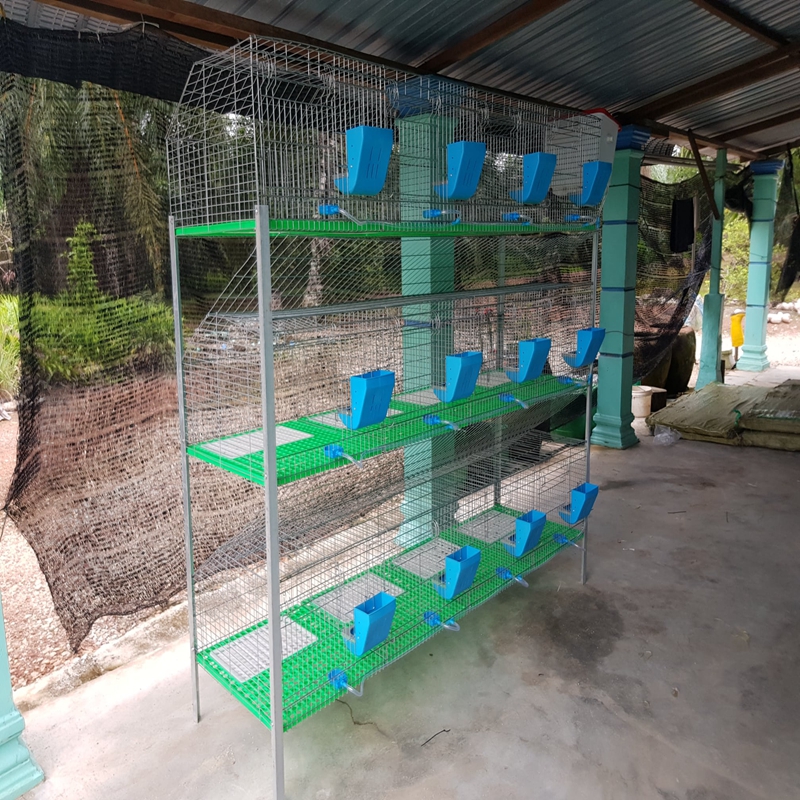Exploring the Benefits and Innovations of Plastic Cages in Modern Poultry Farming Practices
Aug . 08, 2024 03:45 Back to list
Exploring the Benefits and Innovations of Plastic Cages in Modern Poultry Farming Practices
The Role of Plastic Cages in Poultry Farming
In recent years, the poultry industry has witnessed significant advancements in technology and farming practices. One of the most notable innovations is the introduction of plastic cages, which have transformed the way poultry is raised. These structures have become increasingly popular due to their numerous advantages over traditional materials, making them a crucial component in modern poultry farming.
Plastic cages for poultry are designed to provide a safe and comfortable environment for chickens, ducks, and other birds. Unlike cages made from metal or wood, plastic cages are lightweight, corrosion-resistant, and easier to clean. This feature is particularly important in maintaining the health and hygiene of poultry, as clean environments help prevent the spread of diseases. The design of these cages allows for better ventilation, ensuring that the birds receive adequate airflow, which is essential for their overall well-being.
The Role of Plastic Cages in Poultry Farming
Furthermore, plastic cages are designed to optimize space within poultry farms. Their modular design allows for flexible arrangements, enabling farmers to maximize the use of available space. This adaptability is particularly beneficial in commercial poultry operations where optimizing space can lead to higher production rates. By utilizing vertical systems and multi-tier setups, farmers can increase their bird populations without expanding their physical footprint.
poultry plastic cage

Another advantage of plastic cages is their role in enhancing animal welfare. The design of plastic cages often incorporates features that promote natural behaviors among poultry. For instance, many modern plastic cages offer perches, nesting areas, and the ability for birds to move freely, which is essential for reducing stress levels. Improved animal welfare not only leads to healthier birds but is also increasingly important to consumers who are becoming more aware of and concerned about animal husbandry practices.
In addition to the benefits for poultry, plastic cages are also more environmentally friendly compared to their metal counterparts. They are often manufactured from recycled materials and can themselves be recycled at the end of their life cycle. This contributes to a reduction in plastic waste and promotes sustainable practices within the poultry industry. As consumers and producers alike become more conscious of sustainability, the demand for eco-friendly solutions, such as plastic cages, is likely to grow.
Moreover, the introduction of innovative technologies in plastic cage design has further enhanced their functionality. Many modern cages come equipped with automation features, such as feeding and watering systems that operate automatically. This not only reduces labor costs but also ensures that birds receive consistent nutrition and hydration, leading to improved growth rates and overall productivity.
In conclusion, plastic cages are revolutionizing poultry farming by providing a durable, efficient, and environmentally friendly alternative to traditional cage materials. Their benefits extend beyond mere structural advantages; they promote animal welfare, enhance operational efficiency, and support sustainable farming practices. As the poultry industry continues to evolve, the adoption of plastic cages is likely to increase, helping farmers meet the demands of a growing population while maintaining high standards of animal care and environmental responsibility. The future of poultry farming looks promising with these innovative solutions leading the way.
-
Hot Sale 24 & 18 Door Rabbit Cages - Premium Breeding Solutions
NewsJul.25,2025
-
Automatic Feeding Line System Pan Feeder Nipple Drinker - Anping County Yize Metal Products Co., Ltd.
NewsJul.21,2025
-
Automatic Feeding Line System Pan Feeder Nipple Drinker - Anping County Yize Metal Products Co., Ltd.
NewsJul.21,2025
-
Automatic Feeding Line System - Anping Yize | Precision & Nipple
NewsJul.21,2025
-
Automatic Feeding Line System - Anping Yize | Precision & Nipple
NewsJul.21,2025
-
Automatic Feeding Line System-Anping County Yize Metal Products Co., Ltd.|Efficient Feed Distribution&Customized Animal Farming Solutions
NewsJul.21,2025






